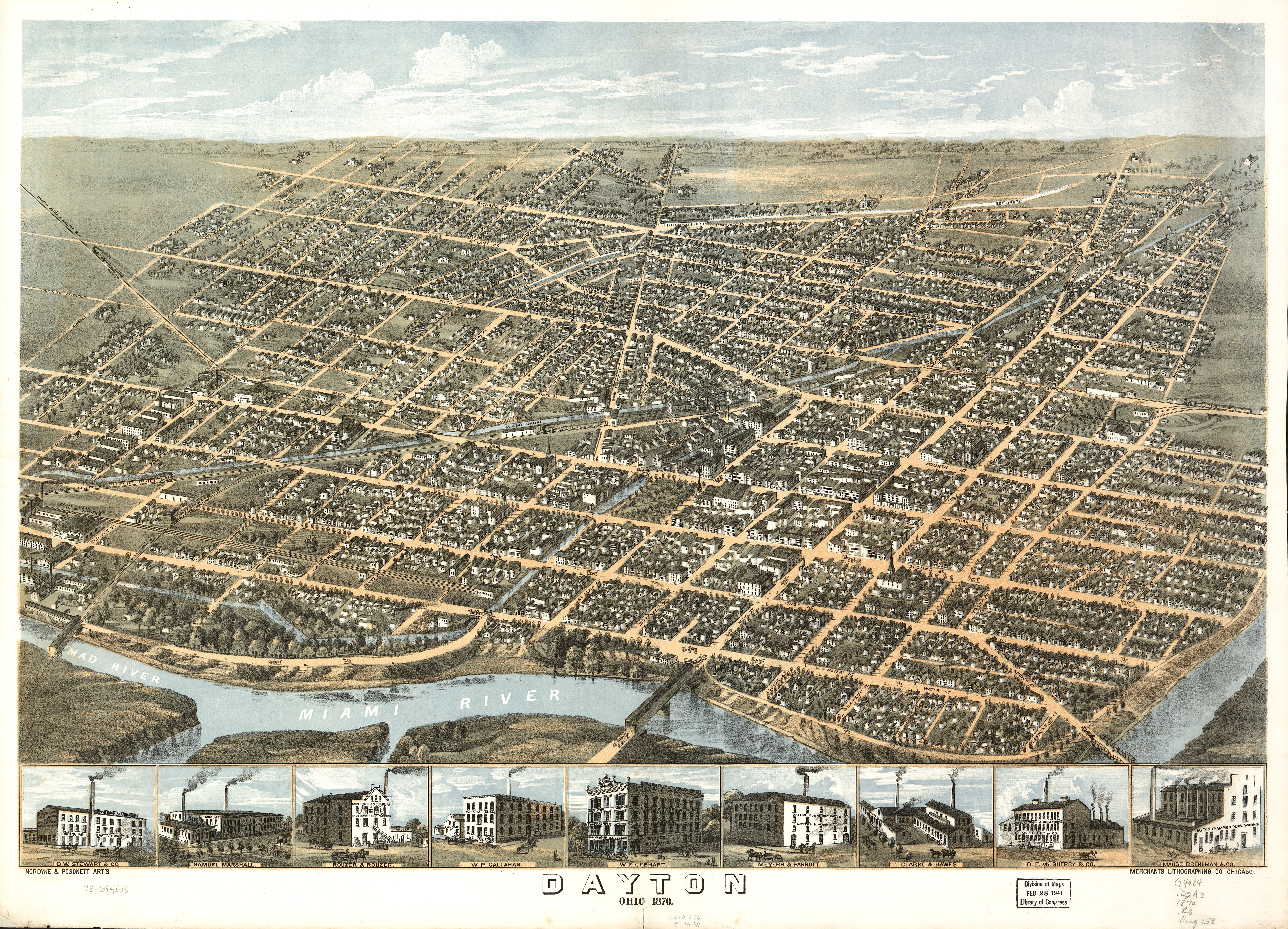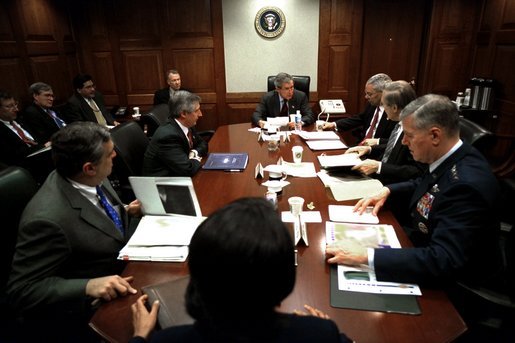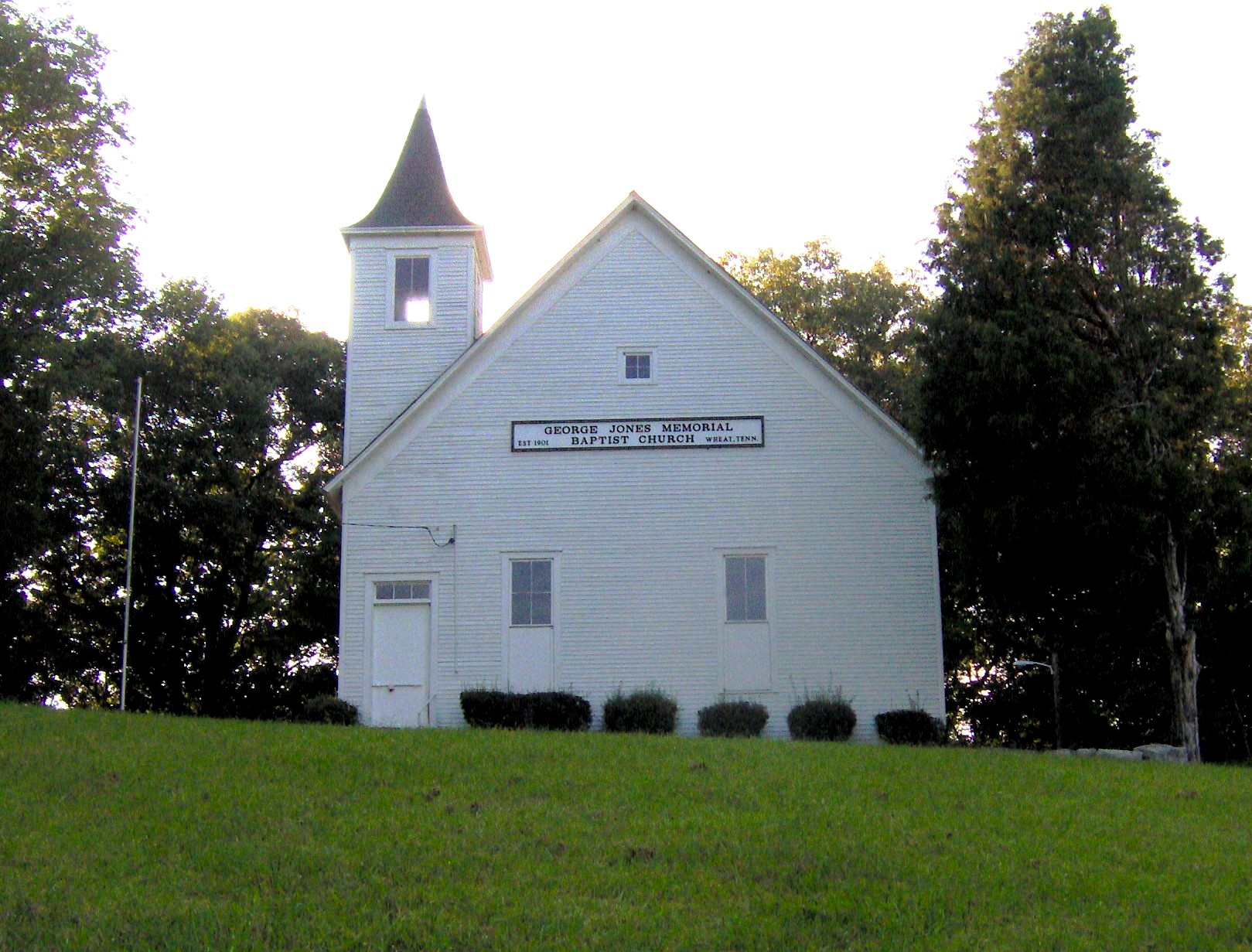|
Charles A. Thomas
Charles Allen Thomas (February 15, 1900 – March 29, 1982) was a noted American chemist and businessman, and an important figure in the Manhattan Project. He held over 100 patents. A graduate of Transylvania College and Massachusetts Institute of Technology, Thomas worked as a research chemist at General Motors as part of a team researching antiknock agents. This led to the development of tetraethyllead, which was widely used in motor fuels for many decades until its toxicity led to its prohibition. In 1926, he and Carroll A. "Ted" Hochwalt co-founded Thomas & Hochwalt Laboratories in Dayton, Ohio, with Thomas as president of the company. It was acquired by Monsanto in 1936, and Thomas would spend the rest of his career with Monsanto, rising to become its president in 1950, and chairman of the board from 1960 to 1965. He researched the chemistry of hydrocarbons and polymers, and developed the proton theory of aluminium chloride, which helped explain a variety of chemical reac ... [...More Info...] [...Related Items...] OR: [Wikipedia] [Google] [Baidu] |
Scott County, Kentucky
Scott County is a county located in the central part of the U.S. state of Kentucky. As of the 2020 census, the population was 57,155. Scott County is part of the Lexington–Fayette, Kentucky Metropolitan Statistical Area. History Native Americans inhabited the Scott County area from perhaps 15,000 years ago. Evidence has been identified that belongs the Adena culture (800 B.C. - 800 A.D.), including several significant Adena mounds. The area was explored by American explorers as early as 1774. One of the earliest settlers was John McClelland from Pennsylvania, who built McLelland's Fort overlooking the Georgetown spring. During the American Revolution, pro-British Native Americans attacked McLelland's Fort in 1777, causing the settlement to be abandoned. Six years later, a new and permanent settlement was founded by Robert and Jemima Johnson, who built Johnson Station (later called Great Crossing), near the north fork of Elkhorn Creek, about five miles west of today's Georget ... [...More Info...] [...Related Items...] OR: [Wikipedia] [Google] [Baidu] |
Dayton, Ohio
Dayton () is the sixth-largest city in the U.S. state of Ohio and the county seat of Montgomery County. A small part of the city extends into Greene County. The 2020 U.S. census estimate put the city population at 137,644, while Greater Dayton was estimated to be at 814,049 residents. The Combined Statistical Area (CSA) was 1,086,512. This makes Dayton the fourth-largest metropolitan area in Ohio and 73rd in the United States. Dayton is within Ohio's Miami Valley region, north of the Greater Cincinnati area. Ohio's borders are within of roughly 60 percent of the country's population and manufacturing infrastructure, making the Dayton area a logistical centroid for manufacturers, suppliers, and shippers. Dayton also hosts significant research and development in fields like industrial, aeronautical, and astronautical engineering that have led to many technological innovations. Much of this innovation is due in part to Wright-Patterson Air Force Base and its place in the ... [...More Info...] [...Related Items...] OR: [Wikipedia] [Google] [Baidu] |
United States National Security Council
The United States National Security Council (NSC) is the principal forum used by the President of the United States for consideration of national security, military, and foreign policy matters. Based in the White House, it is part of the Executive Office of the President of the United States, and composed of senior national security advisors and Cabinet officials. Since its inception in 1947 by President Harry S. Truman, the function of the Council has been to advise and assist the President on national security and foreign policies. It also serves as the President's principal arm for coordinating these policies among various government agencies. The Council has subsequently played a key role in most major events in U.S. foreign policy, from the Korean War to the War on Terror. The NSC has counterparts in the national security councils of many other nations. History The immediate predecessor to the National Security Council was the National Intelligence Authority (NIA), wh ... [...More Info...] [...Related Items...] OR: [Wikipedia] [Google] [Baidu] |
Acheson–Lilienthal Report
The ''Report on the International Control of Atomic Energy'' was written by a committee chaired by Dean Acheson and David Lilienthal in 1946 and is generally known as the Acheson–Lilienthal Report or Plan. The report was an important American document that appeared just before the start of the early Cold War. It proposed the international control of nuclear weapons and the avoidance of future nuclear warfare. A version, the Baruch Plan, was vetoed by the USSR at the UN. Historical context Two schools of thought concerning nuclear weapons emerged in the United States immediately after the end of World War II. One school, which had Secretary of War Henry Stimson as its chief proponent, believed that the apparent secrets of the atomic bomb were scientific in nature, and could not be monopolised forever. They further felt that to hold the bomb ostentatiously in reserve, whilst negotiating with the Soviet Union not to develop one, would simply drive Russia into developing their own ... [...More Info...] [...Related Items...] OR: [Wikipedia] [Google] [Baidu] |
Dean Acheson
Dean Gooderham Acheson (pronounced ; April 11, 1893October 12, 1971) was an American statesman and lawyer. As the 51st U.S. Secretary of State, he set the foreign policy of the Harry S. Truman administration from 1949 to 1953. He was also Truman's main foreign policy advisor from 1945 to 1947, especially regarding the Cold War. Acheson helped design the Truman Doctrine and the Marshall Plan, as well as the North Atlantic Treaty Organization. He was in private law practice from July 1947 to December 1948. After 1949 Acheson came under partisan political attack from Republicans led by Senator Joseph McCarthy over Truman's policy toward the China, People's Republic of China. As a private citizen in 1968 he counseled President Lyndon B. Johnson to negotiate for peace with North Vietnam. During the Cuban Missile Crisis of 1962, President John F. Kennedy called upon Acheson for advice, bringing him into the executive committee (ExComm), a strategic advisory group. Early life and educa ... [...More Info...] [...Related Items...] OR: [Wikipedia] [Google] [Baidu] |
United States Secretary Of State
The United States secretary of state is a member of the executive branch of the federal government of the United States and the head of the U.S. Department of State. The office holder is one of the highest ranking members of the president's Cabinet, and ranks the first in the U.S. presidential line of succession among Cabinet secretaries. Created in 1789 with Thomas Jefferson as its first office holder, the secretary of state represents the United States to foreign countries, and is therefore considered analogous to a foreign minister in other countries. The secretary of state is nominated by the president of the United States and, following a confirmation hearing before the Senate Committee on Foreign Relations, is confirmed by the United States Senate. The secretary of state, along with the secretary of the treasury, secretary of defense, and attorney general, are generally regarded as the four most crucial Cabinet members because of the importance of their respective dep ... [...More Info...] [...Related Items...] OR: [Wikipedia] [Google] [Baidu] |
Mound Laboratories
Mound Laboratory in Miamisburg, Ohio was an Atomic Energy Commission (later Department of Energy) facility for nuclear weapon research during the Cold War, named after the nearby Miamisburg Indian Mound. The laboratory grew out of the World War II era Dayton Project (a site within the Manhattan Project) where the neutron generating triggers for the first plutonium bombs were developed. Post-war construction of a permanent site for Dayton Project activities began in 1947. The lab was originally known as the Dayton Engineer Works. The lab began operations in 1948 and was managed by Monsanto. Mound produced detonators, cable assemblies, timers, firing sets, and other equipment. In 1954, Mound began working with tritium. The lab disassembled bomb components, recovering the tritium within and sending it for repurification at Savannah River Site. Mound supplied enriched non-radioactive isotopes. The lab also produced plutonium-238-powered thermoelectric heat sources called SNA ... [...More Info...] [...Related Items...] OR: [Wikipedia] [Google] [Baidu] |
Oak Ridge, Tennessee
Oak Ridge is a city in Anderson and Roane counties in the eastern part of the U.S. state of Tennessee, about west of downtown Knoxville. Oak Ridge's population was 31,402 at the 2020 census. It is part of the Knoxville Metropolitan Area. Oak Ridge's nicknames include ''the Atomic City'', ''the Secret City'', ''the Ridge'', ''the Town the Atomic Bomb Built'', and ''the City Behind the Fence''. In 1942, the United States federal government purchased nearly of farmland in the Clinch River Valley for the development of a planned city supporting 75,000 residents. It was constructed with assistance from architectural and engineering firm Skidmore, Owings & Merrill, from 1942 to 1943. Oak Ridge was established in 1942 as a production site for the Manhattan Project—the massive American, British, and Canadian operation that developed the atomic bomb. Being the site of Oak Ridge National Laboratory and Y-12 National Security Complex, scientific and technological development still pla ... [...More Info...] [...Related Items...] OR: [Wikipedia] [Google] [Baidu] |
Oak Ridge National Laboratory
Oak Ridge National Laboratory (ORNL) is a U.S. multiprogram science and technology national laboratory sponsored by the U.S. Department of Energy (DOE) and administered, managed, and operated by UT–Battelle as a federally funded research and development center (FFRDC) under a contract with the DOE, located in Oak Ridge, Tennessee. Established in 1943, ORNL is the largest science and energy national laboratory in the Department of Energy system (by size) and third largest by annual budget. It is located in the Roane County section of Oak Ridge, Tennessee. Its scientific programs focus on materials, nuclear science, neutron science, energy, high-performance computing, systems biology and national security, sometimes in partnership with the state of Tennessee, universities and other industries. ORNL has several of the world's top supercomputers, including Frontier, ranked by the TOP500 as the world's most powerful. The lab is a leading neutron and nuclear power research f ... [...More Info...] [...Related Items...] OR: [Wikipedia] [Google] [Baidu] |
Beryllium
Beryllium is a chemical element with the symbol Be and atomic number 4. It is a steel-gray, strong, lightweight and brittle alkaline earth metal. It is a divalent element that occurs naturally only in combination with other elements to form minerals. Notable gemstones high in beryllium include beryl ( aquamarine, emerald) and chrysoberyl. It is a relatively rare element in the universe, usually occurring as a product of the spallation of larger atomic nuclei that have collided with cosmic rays. Within the cores of stars, beryllium is depleted as it is fused into heavier elements. Beryllium constitutes about 0.0004 percent by mass of Earth's crust. The world's annual beryllium production of 220 tons is usually manufactured by extraction from the mineral beryl, a difficult process because beryllium bonds strongly to oxygen. In structural applications, the combination of high flexural rigidity, thermal stability, thermal conductivity and low density (1.85 times that of water) ma ... [...More Info...] [...Related Items...] OR: [Wikipedia] [Google] [Baidu] |
Polonium
Polonium is a chemical element with the symbol Po and atomic number 84. Polonium is a chalcogen. A rare and highly radioactive metal with no stable isotopes, polonium is chemically similar to selenium and tellurium, though its metallic character resembles that of its horizontal neighbors in the periodic table: thallium, lead, and bismuth. Due to the short half-life of all its isotopes, its natural occurrence is limited to tiny traces of the fleeting polonium-210 (with a half-life of 138 days) in uranium ores, as it is the penultimate daughter of natural uranium-238. Though slightly longer-lived isotopes exist, they are much more difficult to produce. Today, polonium is usually produced in milligram quantities by the neutron irradiation of bismuth. Due to its intense radioactivity, which results in the radiolysis of chemical bonds and radioactive self-heating, its chemistry has mostly been investigated on the trace scale only. Polonium was discovered in July 1898 by Marie Sk� ... [...More Info...] [...Related Items...] OR: [Wikipedia] [Google] [Baidu] |
Plutonium
Plutonium is a radioactive chemical element with the symbol Pu and atomic number 94. It is an actinide metal of silvery-gray appearance that tarnishes when exposed to air, and forms a dull coating when oxidized. The element normally exhibits six allotropes and four oxidation states. It reacts with carbon, halogens, nitrogen, silicon, and hydrogen. When exposed to moist air, it forms oxides and hydrides that can expand the sample up to 70% in volume, which in turn flake off as a powder that is pyrophoric. It is radioactive and can accumulate in bones, which makes the handling of plutonium dangerous. Plutonium was first synthetically produced and isolated in late 1940 and early 1941, by a deuteron bombardment of uranium-238 in the cyclotron at the University of California, Berkeley. First, neptunium-238 ( half-life 2.1 days) was synthesized, which subsequently beta-decayed to form the new element with atomic number 94 and atomic weight 238 (half-life 88 years). Since ... [...More Info...] [...Related Items...] OR: [Wikipedia] [Google] [Baidu] |






